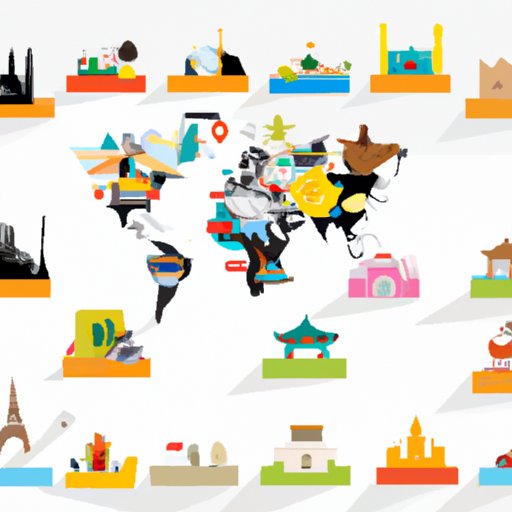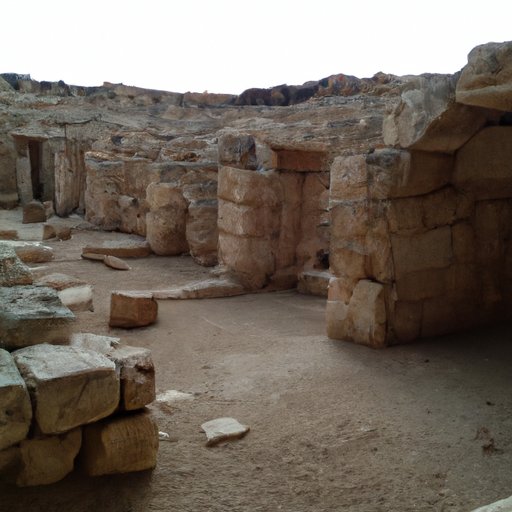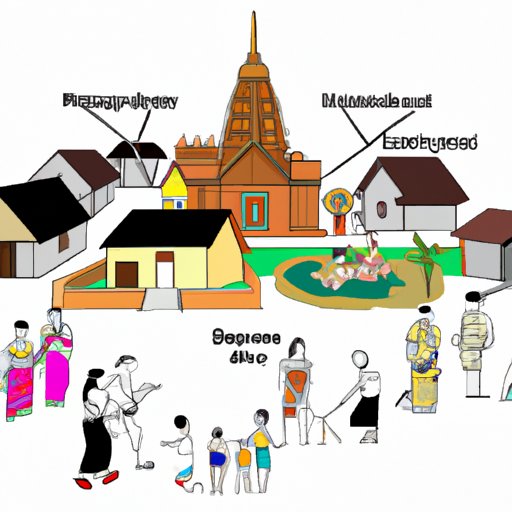Introduction
A culture area is a geographical region where shared beliefs, customs, and practices are common among its inhabitants. These distinct cultural traits can be traced back to ancient times and have been passed down over generations, forming unique identities that shape the region’s culture. In this article, we will explore the definition of a culture area, look at different types of culture areas around the world, and investigate the historical origins of culture areas. We will also examine the impact of culture areas on society, and discuss the dynamics of culture areas in the modern world.
Definition of a Culture Area
A culture area is a geographical region or area that has a distinctive cultural identity or character. This identity is formed through shared beliefs, values, language, customs, and practices that have been passed down from one generation to the next. The culture area is determined by the physical environment and its resources, as well as the historical events that have shaped the region.
Culture areas are not limited to a single nation or country. They are often found across multiple countries, such as the Mediterranean culture area which spans many Mediterranean countries. Different cultures within the same culture area may have different languages, religions, and traditions, but they share many common features.

Overview of Different Types of Culture Areas Around the World
There are many different types of culture areas around the world. Here are some examples:
- The Latin American culture area includes countries in Central and South America, Mexico, and parts of the Caribbean.
- The Middle Eastern culture area encompasses countries in the Middle East, North Africa, and Central Asia.
- The African culture area includes countries in Sub-Saharan Africa.
- The East Asian culture area encompasses China, Japan, and Korea.
- The South Asian culture area includes India, Pakistan, and Sri Lanka.
- The Pacific culture area includes countries in Oceania and the western Pacific region.

Historical Origins of Culture Areas
Culture areas have their roots in ancient times. Over centuries, different cultures have influenced each other and developed unique identities that shape the region’s culture. For example, the Latin American culture area was heavily influenced by the Spanish colonization of the New World in the 16th century, while the Middle Eastern culture area was shaped by the Arab conquests of the 7th century.
Investigating Ancient Cultures and their Impact on Modern Culture Areas
In order to understand the origins of culture areas, it is important to look at the history of ancient cultures that have shaped them. By examining archaeological evidence, we can better understand how different cultures interacted with each other and how these interactions impacted the development of culture areas.
For example, the Latin American culture area was heavily influenced by the Aztec and Mayan civilizations that flourished before the arrival of the Spanish conquerors. These civilizations had a major impact on the culture of the region, including the introduction of new technologies, religious beliefs, and languages.
Examining the Influence of Religion on Culture Areas
Religion has long been an important factor in the formation of culture areas. Many cultures throughout history have adopted certain religious beliefs and practices, which have had a significant impact on the culture of the region. For example, Christianity has had a profound influence on European culture, while Islam has shaped the culture of the Middle East.
Religious beliefs and practices can also be seen in the architecture, art, and literature of a culture area. For example, the temples of Angkor Wat in Cambodia are a testament to the strong Hindu and Buddhist influences in the region. Similarly, the ornate mosques of Istanbul reflect the Islamic faith of the Ottoman Empire.

Impact of Culture Areas on Society
Culture areas have a powerful impact on society. They shape the way people interact with each other, the way they view the world, and the values they uphold. Here, we will explore the economic and social effects of culture areas, and analyze the impact of cultural exchange on globalization.
Exploring the Economic and Social Effects of Culture Areas
Culture areas have a significant impact on the economy of a region. They influence the types of industries that develop, the products that are produced, and the goods and services that are traded. Cultural values also play an important role in determining the level of economic development in a region.
Culture areas also have a profound effect on the social structure of a region. Different cultures have different norms and values that determine how people interact with each other. These cultural values can shape gender roles, family structures, and even political systems.
Analyzing the Impact of Cultural Exchange on Globalization
The increasing interconnectedness of the world has led to a greater exchange of ideas and cultures between different regions. This process of cultural exchange has had a profound impact on the development of culture areas around the world. Through cultural exchange, different cultures can learn from each other, leading to a greater understanding and appreciation of different cultures.
At the same time, cultural exchange has contributed to globalization. As different cultures come into contact with each other, they can share their knowledge, skills, and resources, leading to increased economic growth and development.
Dynamics of Culture Areas in the Modern World
The dynamics of culture areas have changed significantly in the modern world. Here, we will explore the role of technology in shaping culture areas, and examine the impact of migration on culture areas.
Investigating the Role of Technology in Shaping Culture Areas
Technology has had a major impact on culture areas in recent years. The rise of the internet and social media has enabled people to connect with each other more easily, allowing them to share their culture with others around the world. This has led to a greater exchange of ideas, values, and beliefs, resulting in a more diverse and vibrant culture.
At the same time, technology has allowed for the easier distribution of goods and services, allowing people to access products from different cultures without having to travel. This has increased the availability of cultural products, making them more accessible to people around the world.
Examining the Impact of Migration on Culture Areas
Migration has long been a major factor in the formation of culture areas. People from different regions have moved to new areas in search of economic opportunities, leading to a greater exchange of cultures. This has resulted in a blending of cultures, as immigrants bring their own traditions and beliefs to their new homes.
Migration has also had an impact on the languages spoken in culture areas. As different cultures come into contact with each other, they may borrow words and phrases from each other, resulting in a unique blend of languages.
Conclusion
In this article, we have explored the definition of a culture area, looked at different types of culture areas around the world, investigated the historical origins of culture areas, examined the impact of culture areas on society, and discussed the dynamics of culture areas in the modern world. Through this exploration, we have gained a better understanding of the complex and intertwined nature of culture areas.
We have also seen how culture areas can be both a source of conflict and a source of unity. In order to foster understanding and appreciation of culture areas, it is important to recognize and respect the differences between cultures, while also recognizing the commonalities that unite us all.
(Note: Is this article not meeting your expectations? Do you have knowledge or insights to share? Unlock new opportunities and expand your reach by joining our authors team. Click Registration to join us and share your expertise with our readers.)
